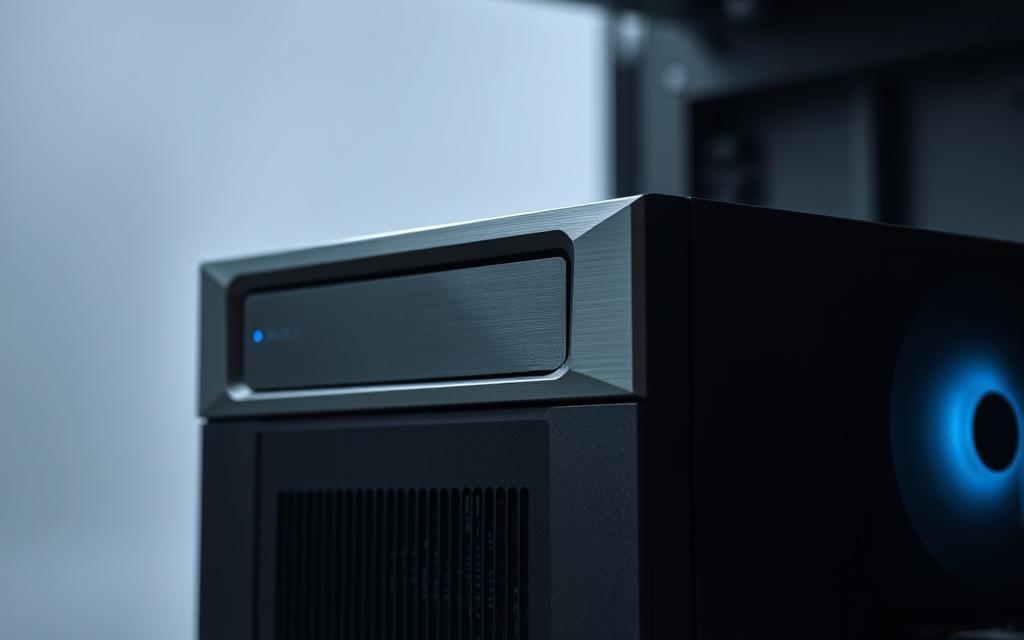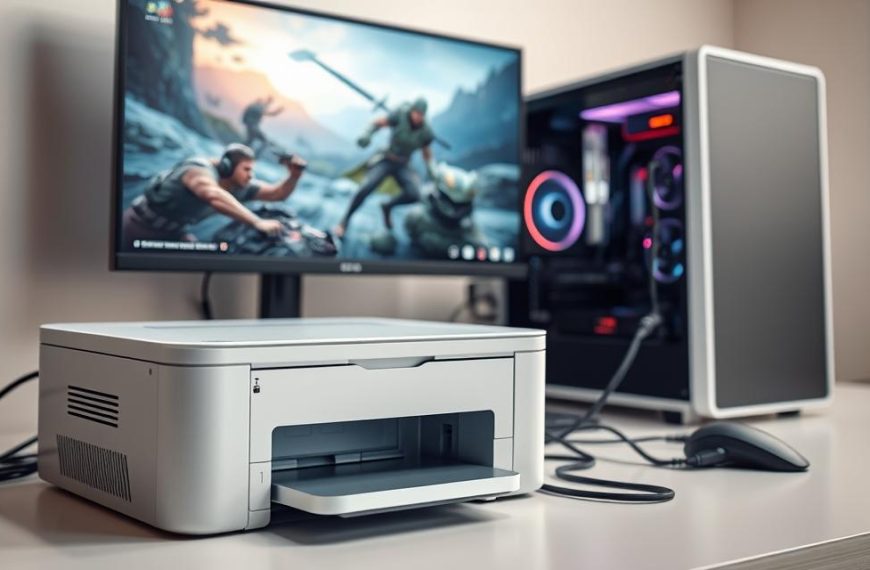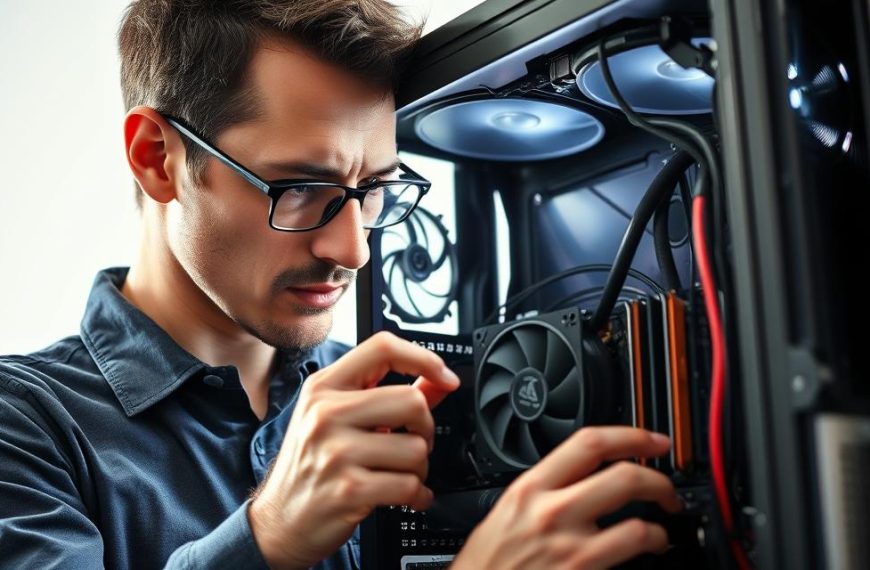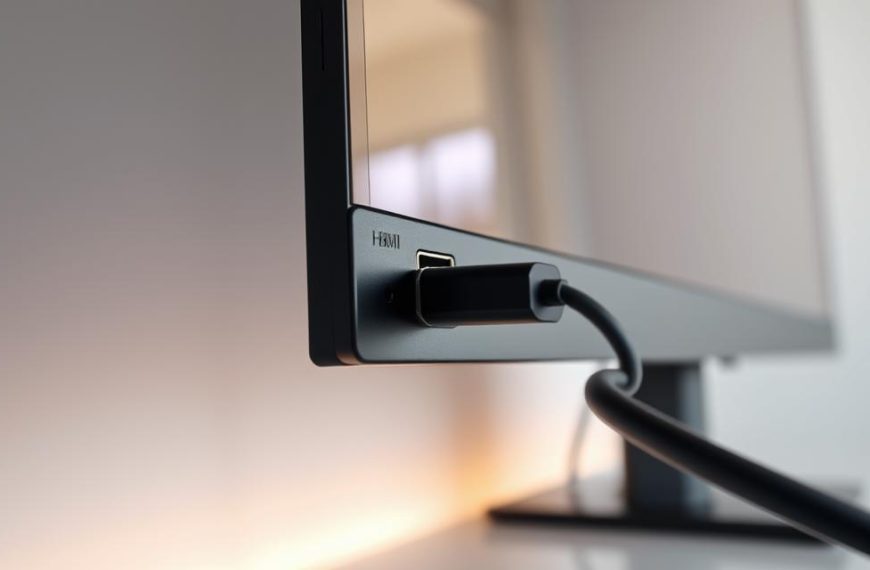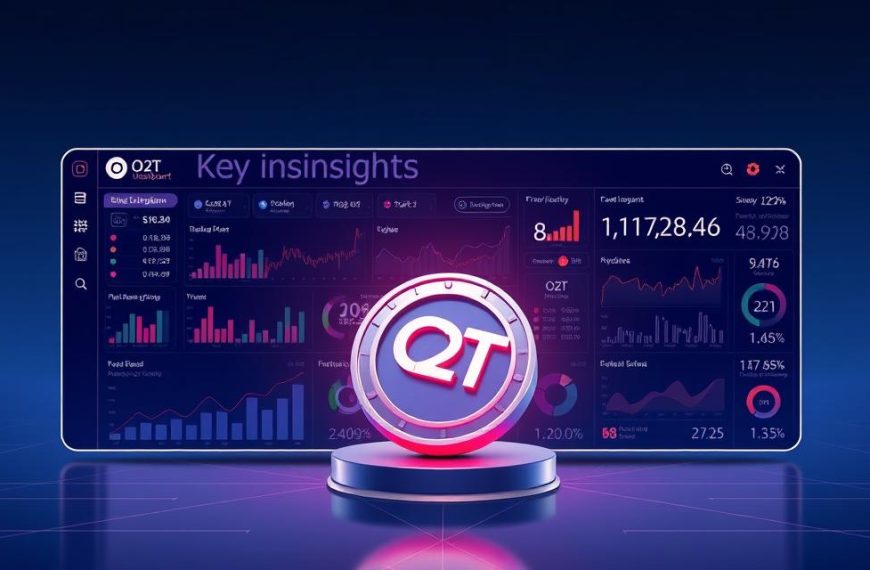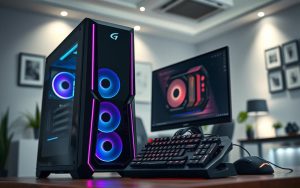By 2025, gaming has shifted from boxed discs to digital storefronts. Faster internet, cheaper storage and platforms like Steam have made online distribution the norm. Most modern games ship as downloads and automatic updates lower the need to handle physical media.
In this context, an optical drive is a removable disc reader that connects via SATA in many builds. Cases now often skip the 5.25-inch bay for cleaner airflow and simpler cable routing.
The core question balances convenience and speed of online distribution against the tactile benefits of discs and long-lived offline access. Some households still value physical films and older titles, or have limited internet and tight data caps.
This article will explain what these units are today, whether they are necessary, reasons to keep one, reasons to skip it, and practical options such as small external readers for occasional use.
What an optical drive is today: formats, connections, and how it fits into modern gaming PCs
Modern disc readers still use lasers to store and retrieve data, but their role has narrowed as downloads took over. These units read and often write CDs, DVD and Blu-ray media, each type offering different capacity and uses.
Most internal units connect via SATA for power and data, while slim external models use USB to link to desktops and laptops without case access. DVD-ROM was the last major physical format for PC games before digital storefronts rose in the early 2010s.
Many DVD drives will read CDs and DVDs; Blu-ray drives remain the usual way to access movie discs on a PC. Not every model writes every format, so check compatibility before buying.
Compared with hard drives and NVMe SSDs, discs are slower and have higher access latency. Yet discs still help when offline installs, film playback or long-term physical archives are needed.
- Common uses: boxed older games, film collections, physical backups.
- Case layout: many gaming-focused cases drop 5.25‑inch bays, favouring slim USB solutions.
- Laptop note: thin-and-light models often omit internal units, encouraging external adapters.
Are optical drives necessary for gaming in the present day?
Most modern releases arrive through storefronts, so physical discs rarely act as the primary installation route.
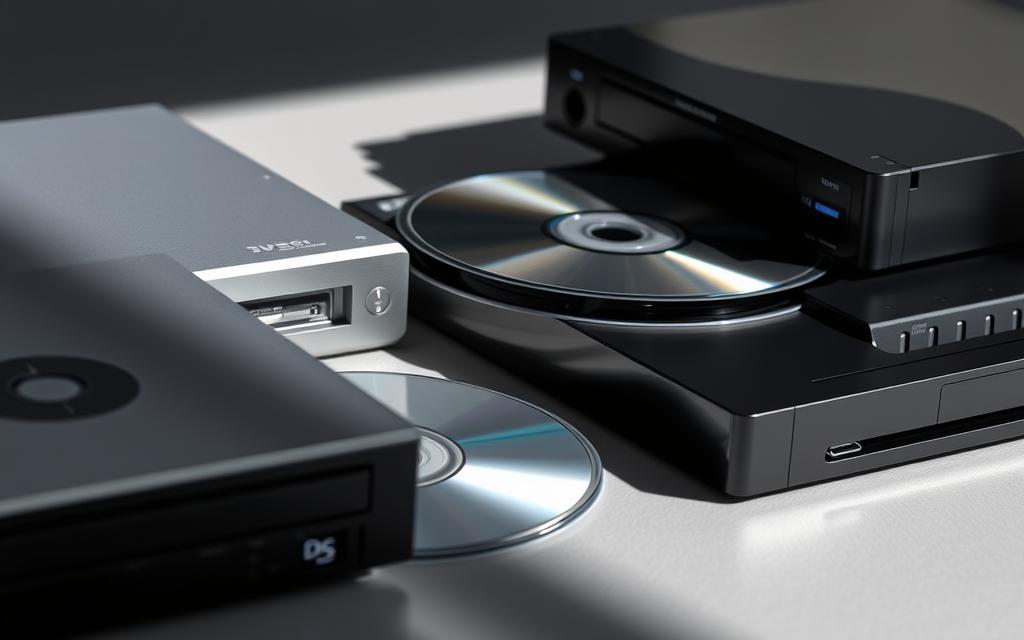
For new titles, you generally do not need optical drives to install or play. Distribution via Steam, Epic and other stores is now the default. Wider broadband access, higher average speeds and lower storage costs made downloads practical for most households.
Exceptions exist. Collectors with boxed libraries or users on tight monthly data may prefer discs to conserve bandwidth. Older boxed games often get re-releases or patches on digital stores, which can improve compatibility and performance over the original disc version.
- Many 2010s game discs only held licence keys and still required large downloads.
- Day‑one updates and live‑service titles mean online access matters regardless of install media.
- Most prebuilt PCs and custom cases in 2025 omit internal bays; an inexpensive external unit covers rare use.
Conclusion: Whether one needs one is situational. For mainstream gaming, it is optional; for niche collectors or offline installs, it remains useful.
Why you might still want an optical drive in a gaming machine
Collectors and preservationists often rely on physical media to keep older titles playable. Many classic games were released on CD‑ROM or DVD and only run correctly when read from the original disc. Retaining a functioning drive helps preserve authenticity across an entire series of favourites.
Hardware vendors sometimes ship driver discs that act as true day‑zero support. When network access is limited, those bundled drivers can get hardware running before online updates arrive.
Windows installation media on disc remains a useful fallback. If USB tools fail or firmware won’t boot from flash, a DVD installer can restore a machine and aid recovery.
For film enthusiasts, Blu‑ray and 4K Ultra Blu‑ray offer better bitrates and colour fidelity than many streams. A Blu‑ray capable drive turns a gaming PC into a high‑quality media station.
- Write-once discs suit long-term archiving of photos and project files.
- External units give laptops occasional access while keeping them thin.
- Check codecs, region codes and DRM/HDCP before planning playback.
| Use case | Benefit | Typical format | Notes |
|---|---|---|---|
| Classic games | Preserves playability | CD/DVD | Some titles require original disc checks |
| Driver recovery | Day‑zero setup | CD | Useful offline; complements online updates |
| OS recovery | Boot/install fallback | DVD | Handy if USB boot fails |
| Film playback & archiving | High quality media & stable storage | Blu‑ray/DVD | Check playback software and DRM |
Reasons many gaming PCs skip optical drives in 2025
Digital storefronts and steady broadband have pushed physical media to the margins of PC builds. Platforms such as Steam and the Epic Games Store make direct download installs and automatic patching standard. This reduces the role of discs for new game releases.
Compatibility hurdles also matter. Older disc-era game installers, DRM and legacy drivers often fail on modern Windows without compatibility layers or virtual machines. That friction discourages keeping a permanent internal reader just in case.

Case trends and aesthetics
Tempered glass panels, improved front airflow and compact layouts have removed most 5.25‑inch bays. Many modern case designs simply have no location to mount an internal unit.
External convenience and cost
An external drive plugged in via USB covers rare disc use while keeping desks tidier. Builders often reallocate the marginal cost of an internal unit to faster storage or better cooling, which yields clearer everyday gains.
“Skipping an internal bay reduces cables, weight and front-panel clutter — all small wins for cleaner builds.”
| Reason | Impact | Typical outcome |
|---|---|---|
| Download-first distribution | Discs rarely required | Most new games install from the internet |
| Legacy compatibility | Software friction | Use virtual machine or external unit |
| Case design | No mounting space | External units preferred |
| Cost & clutter | Saved budget and cleaner desk | Spend on SSDs or cooling instead |
Conclusion: For most users the trade-off is simple. Skipping an internal unit saves cost, space and time while an external option answers any “need optical” moments without permanent changes. Over the years, this approach has become the practical norm for modern pcs.
do you need a optical drive for a gaming pc? Practical guidance and alternatives
For most owners, an external reader handles the odd disc task without changing the main system. It installs older titles, reads soundtrack CDs and runs utilities while keeping the machine quieter and faster day to day.
When an external drive is enough
External units are inexpensive and portable. They are bus‑powered over USB and cover typical chores. Expect light vibration at spin‑up; place the unit on a stable surface to reduce noise.
Prebuilt and custom options
Many prebuilt custom systems ship with or without internal bays. If frequent disc use is unlikely, pick a case without a 5.25‑inch bay to improve airflow and trim weight.
Check rear I/O and front USB access so connecting an external drive does not block essential ports. An external reader keeps options open across multiple pcs.
Blu‑ray playback and ripping cautions
Blu‑ray playback on PC can fail due to AACS and region restrictions; licensed playback apps or compatible players are often required.
“Ripping discs produces large disk files and may breach copyright law; follow local regulations.”
| Scenario | Best option | Notes |
|---|---|---|
| Occasional installs or utilities | External drive | Low cost; portable between systems |
| Frequent archival writing | Internal or desktop writer | Better stability and burn quality |
| High‑quality film playback | Blu‑ray-capable unit + licensed player | Often needs paid software; check DRM |
Budget note: An external unit costs far less than internal options plus bay accessories. For archiving, prefer data disc only when final, unchanging deliverables are required; otherwise cloud or NAS often makes more sense.
Conclusion
Most modern gamers buy and patch games online, so an internal optical drive is optional in 2025. Digital distribution and higher download speeds make downloads the default for new titles and updates.
Keep access to a disc reader if classic series, film collections or offline recovery matter. An inexpensive external USB unit covers occasional installs, driver discs and DVD or Blu‑ray movies with minimal impact on airflow and build weight.
If discs are used only a few times each year, choose an external. If physical media is central to work or media libraries, fit an internal unit and suitable storage such as SSDs and hard drives. Consider compatibility, DRM and bandwidth trade‑offs, and consult community threads like this case bay discussion when planning a build. Look for reputable retailers offering sensible policies and free shipping on accessories.

